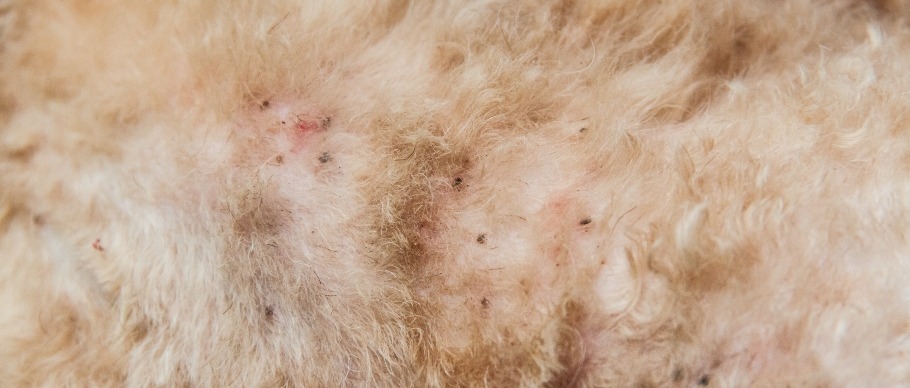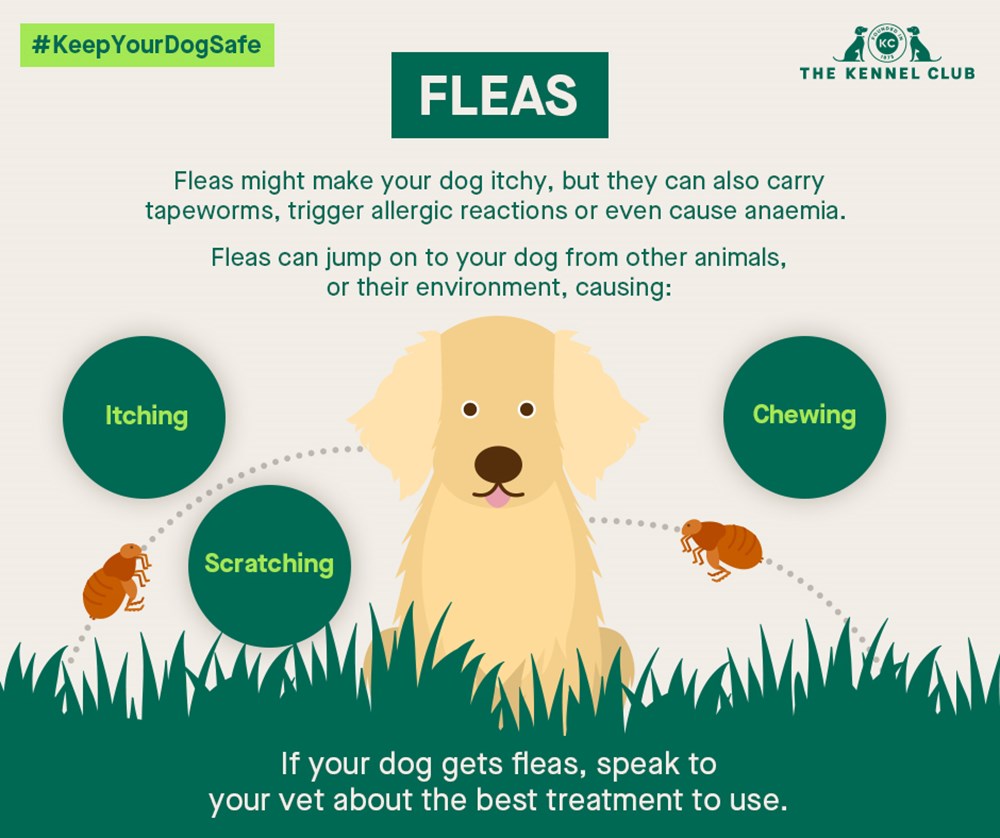To address your dog’s fleas, start by giving them a flea bath using a veterinarian-approved shampoo and then use a flea comb to remove any remaining fleas and eggs from their fur. Additionally, ensure to treat your home and yard to prevent re-infestation and consult a vet for further advice.
Dealing with a dog with fleas can be distressing, but with the right approach, you can effectively manage the situation. Fleas can make your dog uncomfortable and lead to skin irritation and itching. Addressing the issue promptly is essential to prevent the spread of fleas to other pets or family members.
We’ll provide you with clear and actionable steps to follow if your dog has fleas. From identifying the presence of fleas to proper treatment and prevention methods, we’ll guide you through the process of keeping your dog and home free from these pesky parasites.
Signs Of Fleas
If you notice that your furry friend is behaving unusually, it could be a sign that they have fleas. These tiny insects can cause a great deal of discomfort for your dog, leading to itching, scratching, and other unpleasant symptoms. By promptly identifying the signs of fleas, you can take the necessary steps to provide relief for your pet.
Itching And Scratching
One of the most common signs that your dog may have fleas is excessive itching and scratching. Flea bites can cause intense itching, leading your dog to scratch furiously. If you observe your dog persistently scratching certain areas of their body, such as their back, hindquarters, or tail, it could be a strong indication that they have fleas. Additionally, you may notice your dog rubbing against furniture or carpets in an attempt to alleviate the itching.
Visible Fleas Or Flea Dirt
Another sign to look out for is the presence of visible fleas or flea dirt on your dog’s coat. Fleas are small, brown insects that can move quickly through your dog’s fur. Look closely for any tiny dark specks that resemble ground pepper or small insects crawling on your pet’s skin. These could be fleas or flea feces, also known as flea dirt, which is a mixture of dried blood and flea waste. You may find flea dirt during a thorough examination or notice it when brushing your dog.
In Conclusion, if your dog shows signs of itching and scratching or if you notice visible fleas or flea dirt, it’s important to take action swiftly. Treating the flea infestation promptly will help prevent further discomfort for your furry friend and ensure a healthier and happier life for them.

Credit: www.petmd.com
Treating Your Dog
When it comes to treating your dog for fleas, it’s important to act quickly and effectively to provide relief for your furry friend. There are several steps you can take to address a flea infestation and alleviate your dog’s discomfort. Consult a Veterinarian and Use Flea Treatment Products are crucial actions to consider, but there are other measures that can help in the process.
Consult A Veterinarian
Before starting any flea treatment on your dog, consult a veterinarian. They can provide professional guidance on the best course of action for your dog’s specific needs. Additionally, they can recommend safe and effective flea treatment products that are suitable for your dog’s age, size, and overall health.
Use Flea Treatment Products
Flea treatment products such as topical spot-on treatments, oral medications, flea collars, and shampoos can be effective in addressing a flea infestation. When using these products, it’s essential to follow the instructions provided by the manufacturer and your veterinarian carefully. Remember to use products specifically designed for dogs, as using products intended for other animals can be harmful.
Treating Your Home
If your dog has fleas, it’s crucial to address the issue not only on your pet but also within your home. Fleas can quickly infest carpets, bedding, and furniture, so taking steps to treat your home is essential to ensure the complete eradication of these pesky parasites. Here’s what you should do to rid your home of fleas:
Wash Bedding And Vacuum
- Wash your pet’s bedding and any blankets or cushions they frequently use in hot water with a detergent to kill flea eggs and larvae.
- Vacuum all carpets, rugs, and upholstery thoroughly, paying special attention to areas where your pet spends the most time. Dispose of the vacuum bag immediately to prevent reinfestation.
Use Flea Sprays Or Foggers
- Consider using flea sprays or foggers to treat your home. These products are designed to kill adult fleas, larvae, and eggs in the environment.
- Follow the instructions carefully when using these products, and remember to remove pets and their belongings from the treated area until it is safe for them to return.

Credit: www.fourpaws.com
Preventing Future Infestations
Fleas can quickly become a pesky problem for both your dog and your home. Once you have successfully treated your dog for fleas, it’s essential to take proactive steps to prevent future infestations. By incorporating a few simple habits into your routine, you can keep those unwanted fleas at bay and ensure your furry friend stays happy and healthy. Here are two effective ways to prevent future flea infestations:
Regularly Groom Your Dog
Grooming your dog on a regular basis is an excellent way to inspect for fleas and keep them under control. By following this simple grooming routine, you can minimize the chances of your dog getting infested with fleas:
- Start by combing your dog’s fur with a flea comb, paying close attention to areas like the neck, back, and tail.
- While combing, carefully check for any signs of fleas, such as tiny black dots or white flea eggs.
- If you find fleas, drown them immediately in a bowl of soapy water to prevent them from escaping.
- Regularly bathing your dog with a flea shampoo can help kill any remaining fleas and their eggs.
- It’s important to remember that grooming alone may not eliminate all fleas, so it should be combined with other preventive measures for optimal results.
Treat Your Yard
Keeping your yard flea-free is just as important as treating your dog. Follow these steps to ensure your outdoor space remains a flea-free zone:
- Mow your lawn regularly and trim any tall grass or overgrown vegetation where fleas may reside.
- Remove any organic debris, such as fallen leaves or piles of mulch, as these can serve as hiding places for fleas.
- Consider using a pet-safe flea spray or pesticide in your yard to further prevent fleas from infesting your dog.
- Creating a barrier around your yard using diatomaceous earth can help deter fleas by dehydrating them.
- In addition to treating your yard, it’s crucial to wash your dog’s bedding regularly in hot water to kill any fleas or eggs that may be hiding there.
By diligently grooming your dog and treating your yard, you can significantly reduce the risk of future flea infestations. Keeping your dog free from these irritating pests will not only make them more comfortable but also contribute to their overall well-being. Remember, prevention is key, so stay proactive in keeping fleas away from your beloved pet!
Other Considerations
If your dog has fleas, there are some other considerations to keep in mind. Consult a veterinarian for proper treatment options and preventive measures to ensure your dog’s well-being. Take proactive steps to rid your home of fleas and regularly groom your dog to prevent future infestations.
Checking Other Pets
If you have multiple pets in your home, it’s crucial to check all of them for fleas if one of them is infested. Fleas can easily transfer from one pet to another, so identifying and treating all affected animals is essential in ensuring effective flea control.Start by examining your other pets using a fine-toothed comb or a flea comb. This specialized comb helps catch both adult fleas and their eggs, making it easier to spot any signs of infestation. Pay close attention to areas where fleas are commonly found, such as around the neck, ears, and tail.If you notice any fleas or flea dirt on your other pets, it’s crucial to take immediate action. Treat them just like you would your initial infested dog by using a veterinarian-approved flea treatment. This will help eliminate fleas and prevent further spread within your furry family members.Monitoring For Fleas
Even after successfully treating your dog for fleas, it’s important to continue monitoring their condition. Flea infestations can quickly reoccur if not managed properly, so keeping an eye out for any signs of fleas is crucial.While you may have treated your dog and eliminated the adult fleas, there may still be flea eggs, larvae, or pupae hiding in your home or yard. These stages of fleas can survive for weeks, waiting for the right conditions to develop into adult fleas.Regularly inspecting your dog using a flea comb can help you catch any newly emerged adult fleas or keep a close eye on their overall flea status. Additionally, be watchful for any unusual scratching, biting, or redness on your dog’s skin, as these could be signs of a new flea infestation.Taking these monitoring measures will allow you to respond promptly if fleas reappear, ensuring you keep your dog and your home flea-free.Summary
To summarize, checking your other pets for fleas is crucial if one of them is infested. Use a flea comb to thoroughly inspect each animal, paying close attention to common flea hiding spots. If you find any signs of fleas, treat all animals accordingly to prevent further spread.Furthermore, continue monitoring your dog for fleas even after successful treatment. Use a flea comb regularly and be alert to any scratching or skin irritation. This will allow you to catch fleas early and prevent infestation recurrence.By following these simple steps, you can effectively manage fleas and keep your pets happy, healthy, and flea-free.
Credit: www.simpledogco.com
Frequently Asked Questions For What Do I Do If My Dog Has Fleas
What Are The Signs That My Dog Has Fleas?
Frequent scratching, red and irritated skin, hair loss, and small black dots on the fur are common signs of flea infestation in dogs.
How Do I Treat My Dog’s Flea Infestation?
To treat your dog’s flea infestation, use a veterinarian-approved flea treatment product, regularly groom your dog using a flea comb, wash their bedding in hot water, and vacuum your home thoroughly to remove any fleas or eggs.
Can Fleas Harm My Dog’s Health?
Yes, fleas can harm your dog’s health. Fleas can cause skin allergies, infections, anemia, and can transmit other parasites like tapeworms. Prompt treatment is important to protect your dog’s health and wellbeing.
Conclusion
Dealing with a dog who has fleas is undoubtedly a frustrating situation. However, with the right approach, you can eradicate these pesky critters and keep your furry friend comfortable and healthy. Remember to consult with a veterinarian for proper treatment options, invest in preventive measures, regularly groom your dog, and keep the environment clean.
By following these steps, you can effectively manage and prevent flea infestation, ensuring a happy and flea-free life for your beloved pet.


